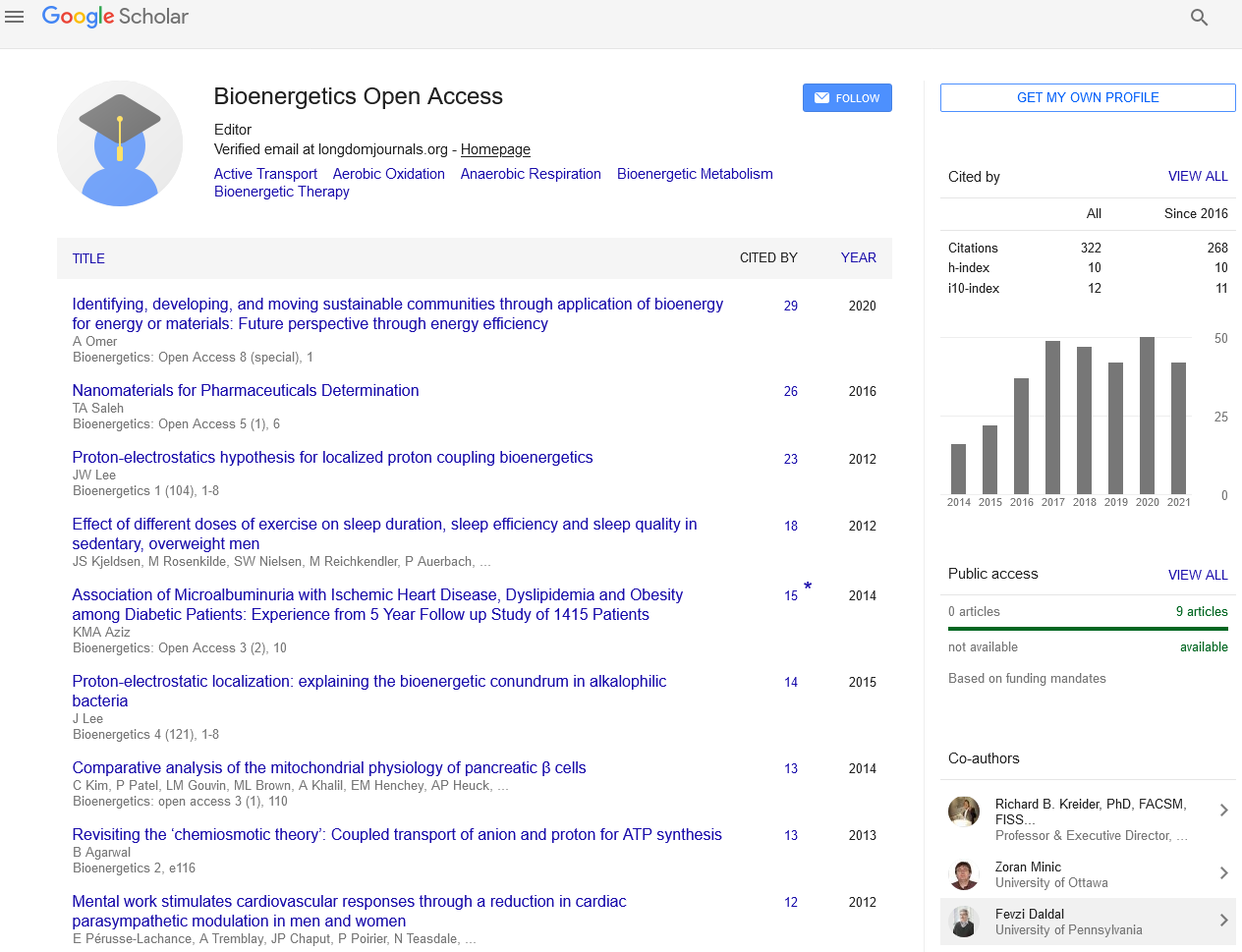Indexed In
- Open J Gate
- Genamics JournalSeek
- Academic Keys
- ResearchBible
- RefSeek
- Directory of Research Journal Indexing (DRJI)
- Hamdard University
- EBSCO A-Z
- OCLC- WorldCat
- Scholarsteer
- Publons
- Euro Pub
- Google Scholar
Useful Links
Share This Page
Journal Flyer

Open Access Journals
- Agri and Aquaculture
- Biochemistry
- Bioinformatics & Systems Biology
- Business & Management
- Chemistry
- Clinical Sciences
- Engineering
- Food & Nutrition
- General Science
- Genetics & Molecular Biology
- Immunology & Microbiology
- Medical Sciences
- Neuroscience & Psychology
- Nursing & Health Care
- Pharmaceutical Sciences
Haemozoin formation in the malaria parasite: A lipidomic perspective
3rd International Conference on Lipid Science and Technology
December 11-12, 2017 | Rome, Italy
Roxanne Mohunlal, David A Fidock and Timothy J Egan
University of Cape Town, South Africa
Columbia University Medical Center, USA
Posters & Accepted Abstracts: Bioenergetics
Abstract:
Malaria is caused by an intracellular pathogen, Plasmodium falciparum, which alternates its life cycle between mosquito and human hosts. Within the human host the parasite undergoes asexual reproduction during the blood stage of its life cycle. Haemozoin formation is an important biological process in the malaria parasite that enables this pathogen to survive within the human host. Plasmodium falciparum sequesters within the host erythrocyte and forms an acidic digestive vacuole where haemoglobin is degraded and globin used as a nutrient source. Toxic free haem undergoes biocrystallization to form inert haemozoin, a dynamic yet crucial process around which there is still debate as to whether proteins or lipids mediate the process. An interrogation into the lipidome of the digestive vacuole was carried out to help elucidate the mechanism of haemozoin formation. The blood stage of Plasmodium falciparum was maintained in continuous culture. Mature trophozoites were harvested by saponin lysis then used to isolate digestive vacuoles. Isolated haemozoin was purified and proteins and lipids extracted. Thin layer chromatography, confocal microscopy and lipidomics based on mass spectrometry were employed to identify and quantify lipid species. Thin layer chromatography illustrated that dissolved haemozoin releases entrapped lipids with a unique lipid profile, consisting mainly of neutral lipids. Mass spectrometry identified acyl carnitine, cholesterol and cholesterol esters, with glycerolipids that are parasite specific. Surprisingly, cholesterol and cholesterol esters which are naturally abundant in the host erythrocyte were found to be associated with haemozoin in higher abundance than previously reported glycerolipids. Various lipid compositions obtained from mass spectrometry data was used to monitor β-haematin (synthetic haemozoin) formation and the rate at which this form. The presence of cholesterol within haemozoin provides new insights into lipid composition, haemozoin formation and overall malaria parasite biology. Recent Publications: 1. Kuter D, Mohunlal R, Fitzroy S, Asher C, Smith P J, Egan T J and de Villiers K A (2016) Insights into the initial stages of lipid-mediated haemozoin nucleation. CrystEngCom 18:5177-5187.
Biography :
Roxanne Mohunlal completed her undergraduate studies specializing in Chemistry, also comprising modules in Biochemistry and Microbiology at the University of Cape Town. Driven by her passion for Chemistry and Biology, she is currently pursuing her PhD under the supervision of Professor Timothy J Egan at the Department of Chemistry, University of Cape Town, South Africa. Her research involves in vitro work with the malaria parasite, Plasmodium falciparum, and spans across the field of Systems Biology incorporating Metallomics, Proteomics and Lipidomics. She applies this multi-faceted approach towards understanding the complexities of the malaria parasite’s biology focusing on the haemozoin formation pathway.

